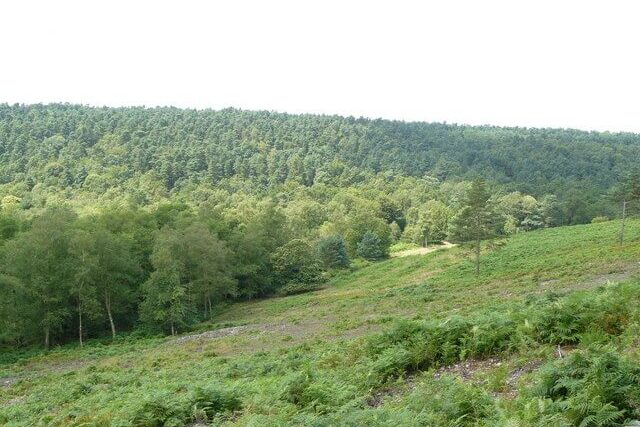
Less than 10% tree cover in nearly half of English neighbourhoods.
An investigation has revealed that lower-income neighbourhoods have significantly fewer trees than wealthier ones in nearly half of English neighbourhoods.
According to Friends of the Earth’s research, England’s tree cover is just 12.8%, with only 10% coming from woodland. This is less than the EU’s 38% woodland cover.
In order to achieve net zero and preserve biodiversity, the government plans to increase tree cover to 16.5% by 2050. However, environmentalists argue that this is insufficient, calling for tree numbers to be doubled.
The examination, completed for the benefit of Companions of the Earth by planning specialists Land Sulis, has interestingly recognized solitary trees and road trees in Britain utilizing laser imaging, supporting past exploration that accounted exclusively for trees in forests and those bunched in more modest gatherings.
It found that less than 20% of the tree canopy covers 43% of England’s neighborhoods, and less than 10% covers 84%.
The study found that some regions have significantly less tree cover than others. For instance, it was discovered that Surrey Heath in Surrey has the highest tree cover with 36.1%, while South Holland in Lincolnshire has the lowest tree cover at only 2.2%. Areas with more wealth did better; The number of trees in the poorest neighborhoods in the UK is significantly lower than in the wealthiest ones on the Index of Multiple Deprivation, a measure of social disadvantage in the United Kingdom.
Mike Childs, the head of science, policy and research at Friends of the Earth, said: “The UK government should be aiming to double tree cover in England by 2050 to ensure that people, no matter where they live or what their income, can experience the mental and physical health benefits that trees bring. Our new mapping identifies the areas that are missing out most on these life-enhancing protections, and where new tree planting should be prioritised.”
Childs reiterated that the government’s tree planting goals would leave the country behind by 2050 and were significantly lower than European averages.
He said: “Current targets for tree planting are woefully inadequate and overlook the devastating impact that timber and wood imports from countries such as Brazil, China and Russia wreak on nature globally.
“We need many more trees for farming, urban cooling and absorbing harmful carbon emissions. There’s more than enough viable land to increase cover twofold without compromising quality agricultural land or protected habitats. The government must get behind a far more ambitious plan to boost tree numbers and adopt this as an official target.”
According to Friends of the Earth, trees were essential for humans, particularly in urban areas, in addition to their role as carbon sinks in the pursuit of net zero. They give cooling in urban areas when water dissipates from their leaves, for instance.
More than four-fifths of England’s 3,790 neighbourhoods are located in urban areas where extreme heat poses the greatest challenges, according to the analysis. According to Public Health England, increasing the number of trees in your neighbourhood is also good for your health and well-being.
A spokesperson for the Department for Environment, Food, and Rural Affairs stated that the government’s strategy to combat climate change and the biodiversity crisis included increasing tree cover throughout England.
“This government has committed to a five-fold increase in average tree planting rates, which will boost the numbers of trees close to where people live and in some of the most nature-deprived parts of the country.”
According to the spokesperson, funds from the £650 million Nature for Climate fund were going to other woodland-focused funds like the Urban Tree Challenge fund, which helps pay for planting trees in urban areas.
——————————————————————————
At Natural World Fund, we are passionate about stopping the decline in our wildlife.
The declines in our wildlife is shocking and frightening. Without much more support, many of the animals we know and love will continue in their declines towards extinction.
When you help to restore a patch of degraded land through rewilding to forests, meadows, or wetlands, you have a massive impact on the biodiversity at a local level. You give animals a home and food that they otherwise would not have had, and it has a positive snowball effect for the food chain.
We are convinced that this is much better for the UK than growing lots of fast-growing coniferous trees, solely to remove carbon, that don’t actually help our animals to thrive.
This is why we stand for restoring nature in the UK through responsible rewilding. For us, it is the right thing to do. Let’s do what’s right for nature!
Support our work today at https://naturalworldfund.com/ and join in the solution!

